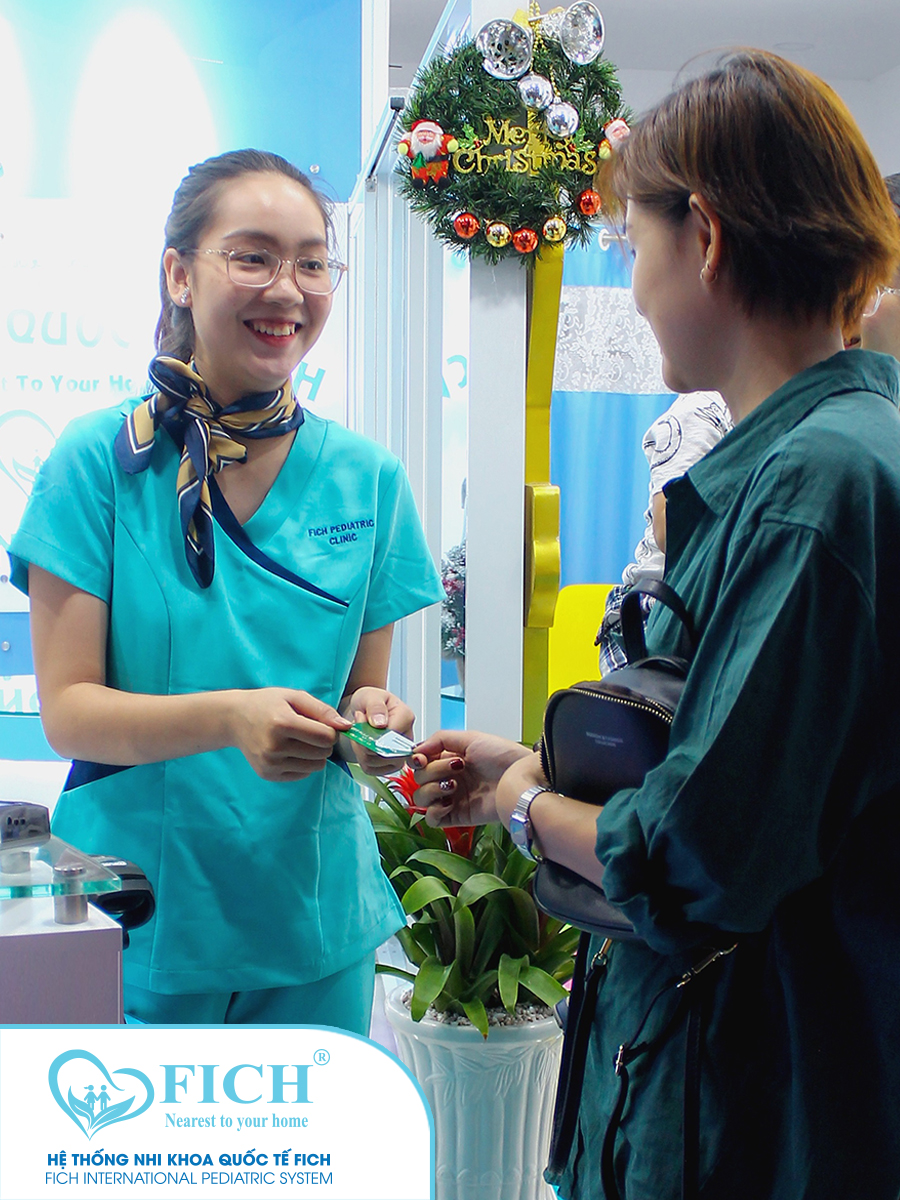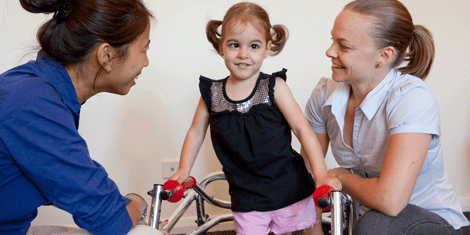Hotline : 0
Email : info@fichgroup-pharmamed.vn
Currently, there are more than 4000 known birth defects in the world. The rate of birth defects ranges from 1.5 to 2%, which varies by country, by social situation and by way of investigation. Many birth defects are not detected in time, causing rapid death or leaving a heavy impact on the child's later physiological function.
Deformities are classified according to structure or function as well as physical development.
Structural malformation occurs when a particular possible part is missing or has an odd shape.
- Birth defects related to the function or development of the body that cause part or all of the body's systems not to work properly.


Congenital motor defects can often be treated in two directions: conservative treatment (correction, physical therapy) or surgical intervention. With some characteristic deformities such as congenital clubfoot, bow leg, scoliosis, flat foot, overturned knee, neck deformity, hip dislocation and some other skeletal deformities, conservative treatment is considered the optimal method. However, conservative treatment can only be applied in the first one to several years of life or in the neonatal period, when the child's body is still flexible and responds well to manipulation and restorative techniques.
The treatment of birth defects by physiotherapy - rehabilitation has become popular in pediatric or obstetric hospitals today.
In which, there are birth defects that need to be detected and intervened with physical therapy - early rehabilitation such as:
1) Children with cerebral palsy: when suffering from this disease, the parts that control body movements of the brain are damaged. It can occur before birth, during birth, or during the first 2 years of a child's life. In some cases, the disease cannot be detected right after birth, but later, the disease has obvious symptoms. It is difficult to pinpoint the exact cause of brain damage in children. And tests can only be done when the baby is 8 weeks old. In children with cerebral palsy, the whole brain is not damaged but only a part is damaged and mainly the part of the brain that controls movement. The damaged part of the brain is not able to recover, but it also does not get worse. However, the movements, posture and other problems associated with cerebral palsy can improve or worsen depending on our treatment and exercise.


2) Children Sternal fibrosis of the sternocleidomastoid muscle: is a condition where the sternocleidomastoid muscle is partially fibrotic due to fetal position or birth accident leading to limited range of motion of the cervical spine. With early signs such as: tumor in sternocleidomastoid muscle detected immediately after birth, feeling of rapid enlargement in the first month, density from slightly firm to very firm; Restricted neck range of motion is often discovered later, after the appearance of this tumor about 2-3 months, the child's head is tilted to the side with the fibrous mass, limiting tilting to the healthy side and turning to both sides. Late signs After 3 months of age, if untreated or improperly treated: There is a tumor as above but the density is much stronger. Tilted neck, the child's head is tilted to the side with the tumor, limited movement of the cervical spine (limited tilting the head to the healthy side and turning the head to the sides). Cervical scoliosis, deformed cervical vertebrae. Cross-eyed, Atrophy on the side of the face with fibrous mass.
3) Congenital hip dislocation: is a condition in which the femoral head of one or both sides of the hip is dislocated from the normal position of the hip joint. Hip dislocation can be detected soon after birth or a few weeks after birth. Newborns need to be screened for this disease right after birth until they're 8 weeks old. If not detected, walking will be a problem for the child later on. If diagnosed with congenital hip dislocation, the child will have to wear a brace for a while and combine physical therapy - rehabilitation. Most cases will be cured without surgery. This is more common in girls and breech babies.
4) Mental retardation: Mental retardation is a group of disorders in the mental development of children (affecting their ability to learn skills compared to other children of the same age). causes that occur before birth, during birth, and after birth. With main manifestations such as the ability to respond slowly or not to what others say, the ability to express clearly, the ability to slow the acquisition of verbal and non-verbal language, the ability to understand slowly about what they hear, touch, see, poor concentration in all activities, limited memory ability
- Poor coordination of whole body movements or difficulties with other movements (sucking, chewing, eating, using hands). Gross motor retardation (swiping, sitting, crawling, standing, walking). Fine motor (using hands), Behavioral disorder: smashing, banging head on objects...
5) Congenital clubfoot: is a malformation that occurs during fetal life leading to a disorder of the joint position between the calcaneus and calcaneal bones; the clavicle is pulled inward toward the medial ankle; heel-box joint dislocated inward; the head and neck of the talus pull inward; the posterior part of the calcaneus is pulled outward; calcaneus rotates internally. The soft tissues and posterior tibial muscles, the flexor of the long toe, the tendons of the calcaneus, the fascia, and the posterior capsule of the ankle joint are shortened and contracted.
Treatment: Correction of the legs immediately after detection (mild form), combined with special exercises to help the legs return to the correct position. If severe, the child needs to be cast, surgery, combined with specialized physical therapy - rehabilitation techniques.
6) Bowed legs: or O-legs. Medically called "inverted knees", only the knee joints cannot be straightened, the two sides of the knees cannot close, the shins turn inward.
Bowed legs affect the baby's gait and physique, making him easy to be laughed at by friends and lack of confidence. At the same time, serious bow legs can also cause illness, affecting the baby's health. In the long term, it also affects walking function or joint problems.
Physiotherapy - pediatric rehabilitation is the task of rehabilitation treatment for subjects in which mainly children with motor disabilities, motor and intellectual retardation and other disabilities. At the same time, they are responsible for supporting care, counseling, and guiding the children's families and relatives to participate in the rehabilitation treatment process.
With experienced collaborators in the field of pediatric rehabilitation, who are technicians and bachelors in physical therapy - rehabilitation who are working at Children's Hospitals, Tu Du Hospitals, Medical University. Pharmacy ... FICH SYSTEM provides physical therapy services for children with malformations such as cerebral palsy, sternoclavicular myoma, clubfoot, congenital hip dislocation... in the inner districts of Ho Chi Minh City Minh.
Methods of rehabilitation of pediatric patients:
1. Physiotherapy: Electrotherapy, light therapy, hydrotherapy, ultrasound, shortwave, massage, acupressure...
2. Movement therapy: using specific methods and techniques of movement and correction for each pathology in order to maximize the recovery of motor and living functions....
3. Speech therapy: helps children increase communication skills such as concentration skills, imitation skills, communication with pictures, gestures... and language development such as language comprehension skills, acting skills language acquisition...
4. Therapeutic activities: hand rehabilitation, daily living function, adaptive equipment...
5. Instructions for using orthopedic devices: Under-knee brace, upper-knee brace, hip stenosis, spinal adjustment vest.
6. Counseling for pre-school special education classes for necessary cases, community rehabilitation programs.
Contact hotline: 0901 108 068 for more detailed information and to make an appointment with a doctor today!
 Head Office: 2 Floor, Saigon ParagonTower, 3 Nguyen Luong Bang, Tan Phu, Dis 7, Ho Chi Minh City, Vietnam
Head Office: 2 Floor, Saigon ParagonTower, 3 Nguyen Luong Bang, Tan Phu, Dis 7, Ho Chi Minh City, Vietnam
 info@fichgroup-pharmamed.vn
info@fichgroup-pharmamed.vn
 www.fichgroup-pharmamed.vn
www.fichgroup-pharmamed.vn
MST: 0315928916
08:00 - 17:00 Monday to Friday
